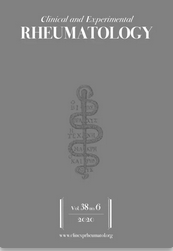 Juvenile dermatomyositis is the most common inflammatory myopathy in children. In its typical form, it causes as skin lesions and predominantly proximal symmetrical bilateral muscle weakness. Other symptoms (digestive, joint, pulmonary, etc.) can occur and the expression of the disease appears, in fine, quite heterogeneous. A study carried out in Germany confirms this great diversity on a national multicenter cohort of 196 patients aged 8 to 16 years. Almost 10% of them have, for example, interstitial lung disease and 41% have arthritis and / or joint deformities.
Juvenile dermatomyositis is the most common inflammatory myopathy in children. In its typical form, it causes as skin lesions and predominantly proximal symmetrical bilateral muscle weakness. Other symptoms (digestive, joint, pulmonary, etc.) can occur and the expression of the disease appears, in fine, quite heterogeneous. A study carried out in Germany confirms this great diversity on a national multicenter cohort of 196 patients aged 8 to 16 years. Almost 10% of them have, for example, interstitial lung disease and 41% have arthritis and / or joint deformities.
A link with the type of events…
The presence of so-called “myositis specific” autoantibodies assists with diagnosis. In this cohort, 91 children were examined for these antibodies, which were found in 44% of them. Identification of the autoantibody allows to establish homogeneous subgroups of patients in terms of clinical picture:
- children with anti-MDA5 autoantibodies more often than others have joint damage and more specifically polyarthritis of the small joints of the hands and feet, which can lead to a misdiagnosis (juvenile idiopathic arthritis), especially since muscle damage is often minor or even absent;
- the presence of anti-TIF1-γ autoantibodies is also associated with a higher probability to develop small joint arthritis and calcinosis in 42% of cases;
- the production of a specific auto-antibody for myositis of the antisynthetase family (anti-Jo-1, anti-PL7, etc.) is associated with a higher risk of interstitial lung disease, which is however less frequent than in adults ;
- more than 33% of patients with anti-NXP-2 autoantibodies have calcinosis, 43% have dysphagia, and 79% have joint deformities due to often significant muscle damage, as is also the case in children with anti-Mi-2.
... and with evolution
The presence of autoantibodies specific to myositis could alsobe prognostic since, after five years, 56% of the children who produced them had inactive dermatomyositis and 23.5% of them were no longer treated.
